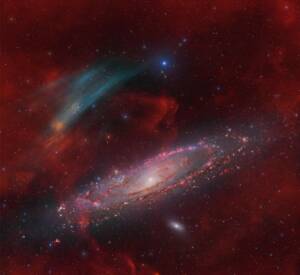
Discovery of the M31 [OIII] emission arc
Recently, a major discovery by an international team of amateur astronomers and scientists has become a huge online hit, and this new discovery is just located in one of the
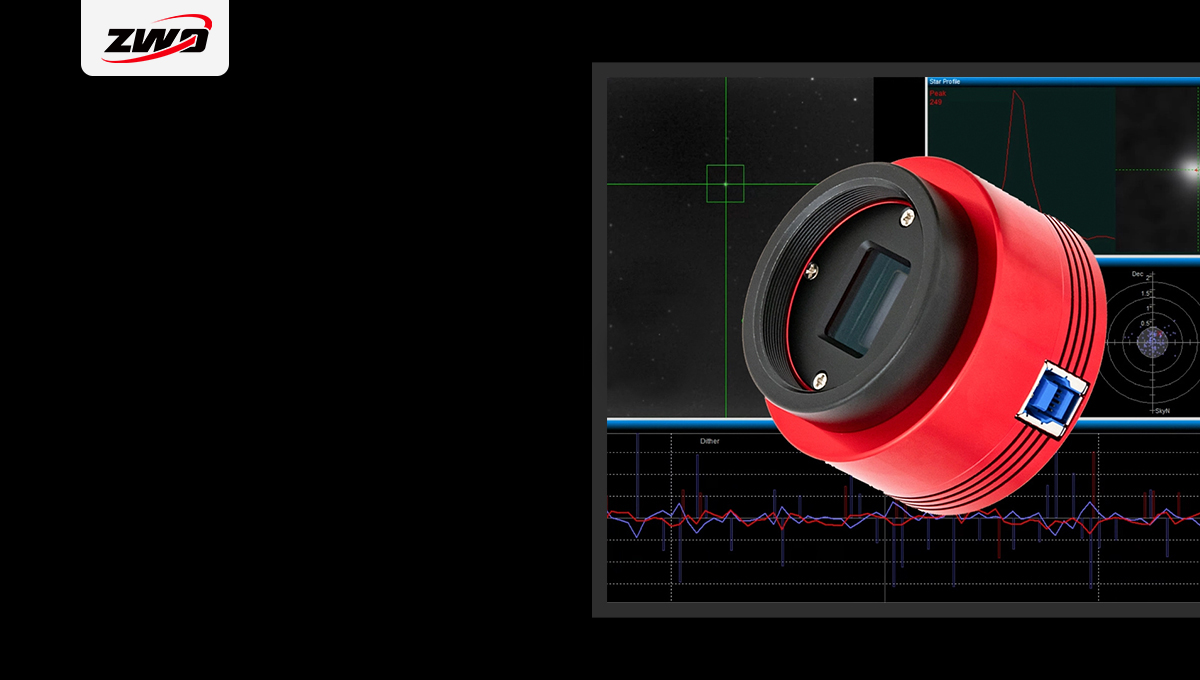
By: Rouzbeh Bidshahri

Large aperture reflectors with long focal lengths can be great for imaging small objects. Many SCTs, RCs, IDKs, and CDKs have focal lengths greater than 2000mm, but they do require guide cameras for autoguiding most of the time.
ZWO recently introduced a planetary camera, the ASI432MM, that seemed to me like an interesting candidate for a guide camera. I decided to give it a try for guiding my Planewave CDK14.
Perfect guiding is even more critical with longer focal lengths as the image scale is very fine. Even the most minute guiding errors will quickly become evident. A small guidescope is inadvisable because of its low resolution and differential flexure of the telescope that isn’t picked up in the guidescope. An Off-Axis Guider (OAG) is preferrable as it offers the greater accuracy needed with these systems.
Unlike a guidescope, the OAG uses the main telescope’s light path and its full focal length, typically in the 2000mm to 4000mm range. With small pixels, the light from these highly magnified stars is spread over several pixels, reducing the signal in each pixel and the camera’s ability to detect fainter stars. Larger pixels are better for recording star images for guiding at these focal lengths.
The key advantage of the ASI432MM is the massive 9×9-micron pixel size. That is one of the largest pixels currently available to amateurs, especially in such a small package. Below is a comparison of the pixel sizes of some of the most popular large-pixeled guide cameras.

The resulting image scale can be seen below. Even at 4000mm, the camera achieves a scale that offers both good resolution and signal-to-noise ratio.

Longer focal lengths have narrower fields of view, making it hard to find a suitable guide star with small sensors. Using an OAG, the telescope has to be moved until a bright star shows up in the small frame of the guide camera, a cumbersome procedure with automated systems. The ASI432MM’s large 15x10mm sensor is an advantage here.


An OAG with a large prism is needed to cover the field of this large sensor. My Optec Sagitta (reviewed for AGT here) is a very good match.
Below is a chart comparing the size and area of some of the more popular large sensors used as guide cameras. The area of the ASI432MM sensor is more than that of the ASI174 and Ultrastar Pro combined:

The full well capacity (FWC) of a pixel is the amount of charge it can hold before it becomes fully saturated and unable to take more. The ASI432MM’s FWC of 97,000 electrons is one of the highest of any camera currently on the market. It’s an astonishing threefold increase over the FWC of the ASI174.
Why does this matter? There are times when a star in the field of view is too bright and saturates the pixels. Such a star image isn’t useful because the guiding software can’t determine the exact center of the star, which it uses for the greatest precision.
The workaround to this issue is to use a lower gain but that increases the noise and makes dim stars too faint to detect. An alternative is to use shorter exposures, but that’s not always possible. In poor seeing, longer exposures are preferred to average out the seeing blur to keep the guider from constantly chasing atmospheric disturbances.
The huge FWC of the ASI432MM means that even at higher gains the camera has the sensitivity to detect faint stars and still have plenty of well depth headroom to capture larger bright stars. This is very useful with modern multi-star guiding software like PHD2 where the more stars detected, the better.
The ASI432MM uses the new generation Sony Pregius IMX432 sensor. The image is clean, with dark current and read noise kept low. Typical operating read noise is in the 2.4 to 4.3 electron range (much lower than the 5.5 electrons of the Ultrastar Pro). The camera has a healthy peak quantum efficacy (QE) of 79%. These features mean the camera is able to detect even very dim stars. I didn’t need to use any hot pixel correction or dark frames to avoid noise and hot pixels that might be mistaken for guide stars by the software.
Other features, including USB 3.0 connection, fast frame rate, and global shutter are not important on a guide camera but are useful when used for planetary imaging.
I noticed signs of amp glow on the lower side of frame, but it did not seem to affect the guiding operation at all.
The IMX432 sensor also has high quantum efficiency in the near infrared region; wavelengths just beyond about 700nm at the end of the visible spectrum. This is a bit of a bonus feature since the longer wavelengths fare better with atmospheric turbulence, keeping the guide stars images smaller and yielding smoother guiding performance. A filter like the IR685nm allows only these long wavelengths to pass.
The graph below shows the relative QE of 90% at 685nm compared to the sensor’s maximum. This equates to an actual QE in the near infrared of about 70%, far higher than the 45% value of the earlier ASI174 guide camera.

The ASI432MM is available only with M42 threads. There is no “lipstick” version of this camera but ZWO includes a 1.25-inch nosepiece that can be inserted into a typical OAG focuser. The ASI432MM weighs 126g compared to the featherweight 60g ASI174Mini.

Shown below is the ASI432MM in an Optec Sagitta OAG focuser attached to a Planewave CDK14 telescope. It’s important to ensure there is sufficient space to accommodate the body and back focus when configuring the OAG, as described on AGT in this article. Larger telescopes often have enough back focus to accommodate a range of instruments and accessories.

I tested the new ASI432MM against the ZWO ASI174Mini. The 14-inch Planewave CDK was pointed at the exact same region of the sky as the cameras were swapped.
Based on sensor specifications and pixels, the signal of a star in the ASI432MM should be 240% that of the ASI174. This was tested with a guide exposure time of 5 seconds to capture single frames. The gain was left at 50% on both cameras binned 2×2.
The image below shows how many more stars were detected with the ASI432MM. The signal-to-noise ratio was much higher as well (note the logarithmic scale).


The same test was repeated using the guiding software, PHD2. With the ASI432MM, there were many more stars available for the software’s multi-star guiding algorithm to use.

Results with the ASI432MM were very good despite poor seeing, as shown below in a guiding session graph. Note the large number of detected stars (red arrows), nine of which were used to guide the 90-lb (41kg) telescope at 2565mm of focal length with an RMS guiding error of only 0.39 arcseconds (white arrow). Even better guiding can be expected with better seeing.

Despite being marketed as a “Solar/Planetary” imager, the ZWO ASI432MM’s combination of large sensor, very high full well capacity, extra-large 9-micron pixels, and high quantum efficiency seemed to me to be the perfect recipe for a very capable guide camera for long focal length telescopes.
I was pleasantly surprised just how much of a difference there was compared to another very good guide camera. Real world tests against the “gold standard” ASI174Mini showed the newer generation ASi432MM is a clear winner.
I don’t think I have ever seen that many guide stars at this focal length, and I’m very happy to have found this new “planetary” camera to guide my long focal length telescope!
Website: ASI432MM – ZWO ASI (astronomy-imaging-camera.com)
MSRP: $539
Rouzbeh’s Imaging Setup: https://rouzastro.com/observatory-2/

Recently, a major discovery by an international team of amateur astronomers and scientists has become a huge online hit, and this new discovery is just located in one of the
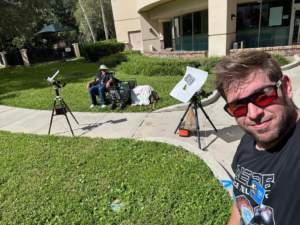
That 11-year-old boy staring at Horsehead Nebula photo would never have imagined… Decades later, he’d be capturing amazing deep-sky images from his Florida backyard! “ It was amazing to see

Hello,Sara Harvey,thanks for accepting our interview invitation. Congratulations on winning the ASIWEEK competition in week! Q1: At first, congratulation that your nice image won #ASIWEEK. Can you introduce yourself to
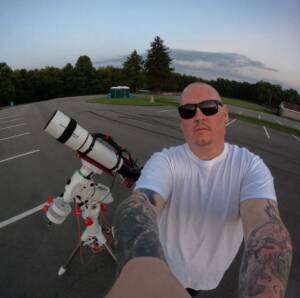
Astrophotography is more than just capturing images of the night sky—it’s a journey of discovery, patience, and creativity. For this passionate astrophotographer, what started as a chance encounter with a
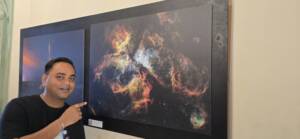
Taranjot Singh, an Indian origin Australian astrophotographer who is making waves on the international stage. Taranjot has been recognized as one of the Top 5 finalists in the prestigious Siena
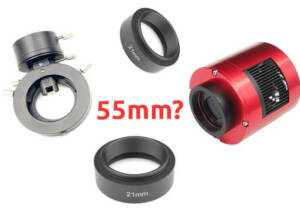
The back focal length is advised by telescope manufacturers. Since most telescopes have a 55mm back focal length, we are here to provide detailed instructions for all ASI cooled cameras.Please